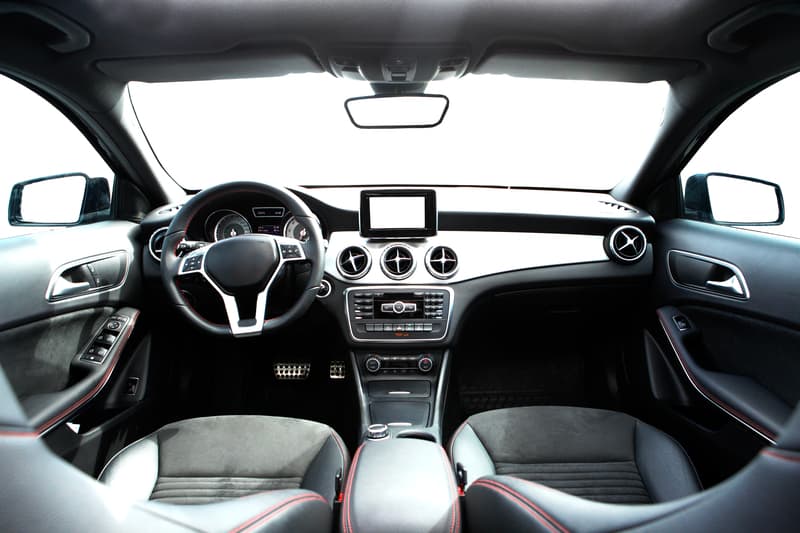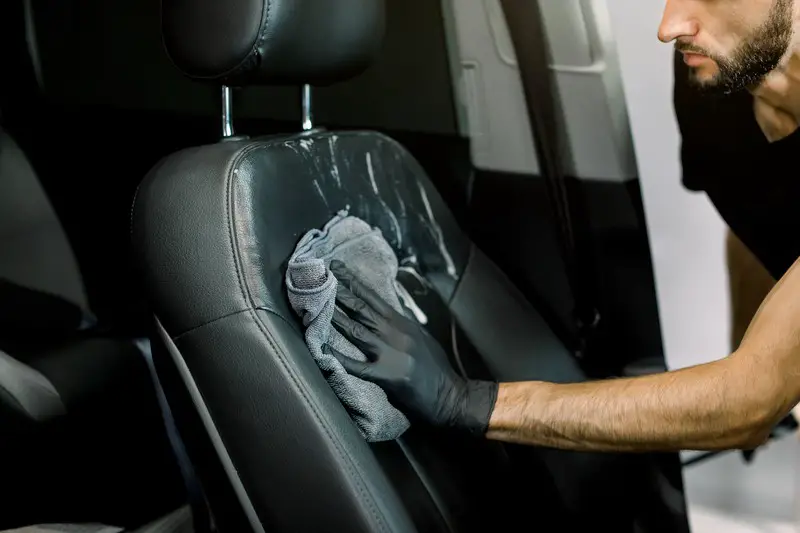
Black has become ubiquitous in car interiors. You don’t have to hang out on the internet long to find people moaning about it. Many find it hot and claustrophobic. Others find it boring, with no personality.
However, even the haters often end up buying one because obtaining another color typically costs more or involves a long waitlist. So why have car manufacturers gone goth for interiors?
Here are 7 reasons why most cars have black interiors.
1. Black Interiors Match Nearly All Exterior Paints
Black interiors match nearly all exterior paints. It’s the little black dress that works for every occasion, so to speak. Clashing colors are an eye sore and with manufacturers offering a wide range of exterior colors, providing a dark interior reduces buyer regret.
Black matches everything is a slight overreach. For example, many believe you should never combine black with brown or tan.
Another controversial color combo is the black on black, where the interior and exterior match. Some think it is cool and stealthy. Others say it looks like it’s permanently attending a funeral.
Lastly, the white exterior with a black interior feels cheap to many people. It’s the company car nobody wanted, but your boss lets you drive it for free, so you can’t justify saying no.
2. Black Interiors Look Sportier
Many feel black gives a car a sportier feel. For example, imagine a purple, pink, or yellow vehicle with a white interior. It evokes the image of spring picnics, frosted cupcakes, summer dresses, and floppy sun hats.
But do the same colors with a back interior, and it’s wicked. There is an urban edge, slightly villainous and daring.
The rich like to stand out from the masses. Thus, classy is leaning towards lighter cars. Not having a black interior screams money, custom orders, and staff to keep it clean and well-maintained.
Thus, for all blacks’ sportier feel, it clashes with the truth that many high-end sports cars are avoiding it. Even those that do have wicked interior accents that set off expensive details and are far from dull.
3. Black Car Interiors Are Easier To Maintain

Black car interiors are easier to maintain. Slight stains and dirt are hardly noticeable, making them a breeze to keep “clean.”
Light interiors show off every spill and mark, practically glowing off the seat and carpet. Nobody has time to vacuum and wipes down their interior every day. Besides, have you seen what small children do with their snacks?
Pets also can cause a great deal of wear and tear, especially if your interior is cream, light grey, or tan.
Black seats and carpets may be easy to keep clean, but the plastic “piano” trims can get dull and scratched with ease. Unfortunately, it has also become so pervasive it’s being associated with “cheap.”
Also, if you have white fur pets, it will never go away in a black car. So that one hair will always escape cleaning and glow like it’s radioactive.
4. Black Isn’t Making Your Car That Much Hotter
Black cars don’t make cars “hotter,” as people believe. Consumer Reports did an entire study on it and found the differences were negligible. Thus, car manufacturers have little motivation to provide lighter interiors for “coolness” when it hardly matters.
What does make a considerable difference is using sunshades and tinted windows.
Black interiors might not be much hotter, but they are still hotter.
Plus, the placebo effect is a real phenomenon. So if people think their car is hotter because it is black, it will feel hotter, regardless of any proof stating otherwise.
5. Having One Color (Black) Cuts Car Manufacturing Costs
It is cheaper for car manufacturers for interiors to be a single color. They just buy each material in bulk in one color rather than pay more for a variety of small batches. Also, you don’t have to keep stopping assembly to switch fabrics.
Since dealerships prefer black for their demo models, it’s the color with the greatest initial demand. Thus, it’s easier for manufacturers to keep pumping out black interiors.
It is natural for any industry to cut costs where it can. Of course, when business gets more challenging, the temptation to cut costs is heightened. But eventually, car manufacturers will have to rethink forcing their all-black interiors on their customers.
Millennials and Gen Z have very different attitudes regarding car ownership than Boomers, and if they are going to splurge on a car, they want it their way or will do without.
They’ve got companies that will deliver their groceries, they enjoy working from home, and they are huge advocates for public transport and lift club options. They are a tough sell with high expectations.
6. Cars With Black Interiors Are Easier To Sell
As much as people complain about black interiors, many prefer them. Dealerships claim that black interiors are the cars that sell. Other colors require the “right” person to come through the door. However, black is a color that doesn’t put most buyers off.
In addition, customers may be buying black interiors not out of preference but because they don’t care that much. Some people’s choices can be boiled down to “as long as it isn’t ugly.”
Black is neutral, whereas green, purple, and orange are not. Red is another divisive color. But black is to the car industry what eggs shell is to housing.
Black interiors may be easier to sell because customers are told it is easier to sell. See the next point.
7. Resell Value Is Higher With Black Interiors
Many people buy black interiors because they are concerned about resell value. The word is that they sell faster than those with a different color. Thus, people “wanting” a black interior don’t necessarily prefer the aesthetic; they’re just worried about future complications.
The problem with buying anything based on resell value is that the advice only reflects the current market. The market may have changed when you are ready to trade in your vehicle or sell it.
Also, a car bought for its universal appeal may be an easier sell, but it won’t be “snapped up.” Nothing is making it unique or worth a bidding war over. For example, look at the reports on car color exteriors. Yellow is the winner in holding its value because it is rare.
All of this means that those in a common color will be judged harder for milage and any other minor sign of wear and tear. Why buy yours when so many others look just like it?
The “specialness” of your car has to come from something. For some, it is fewer miles and pristine condition; for others, it is a heavy reduction in price.
